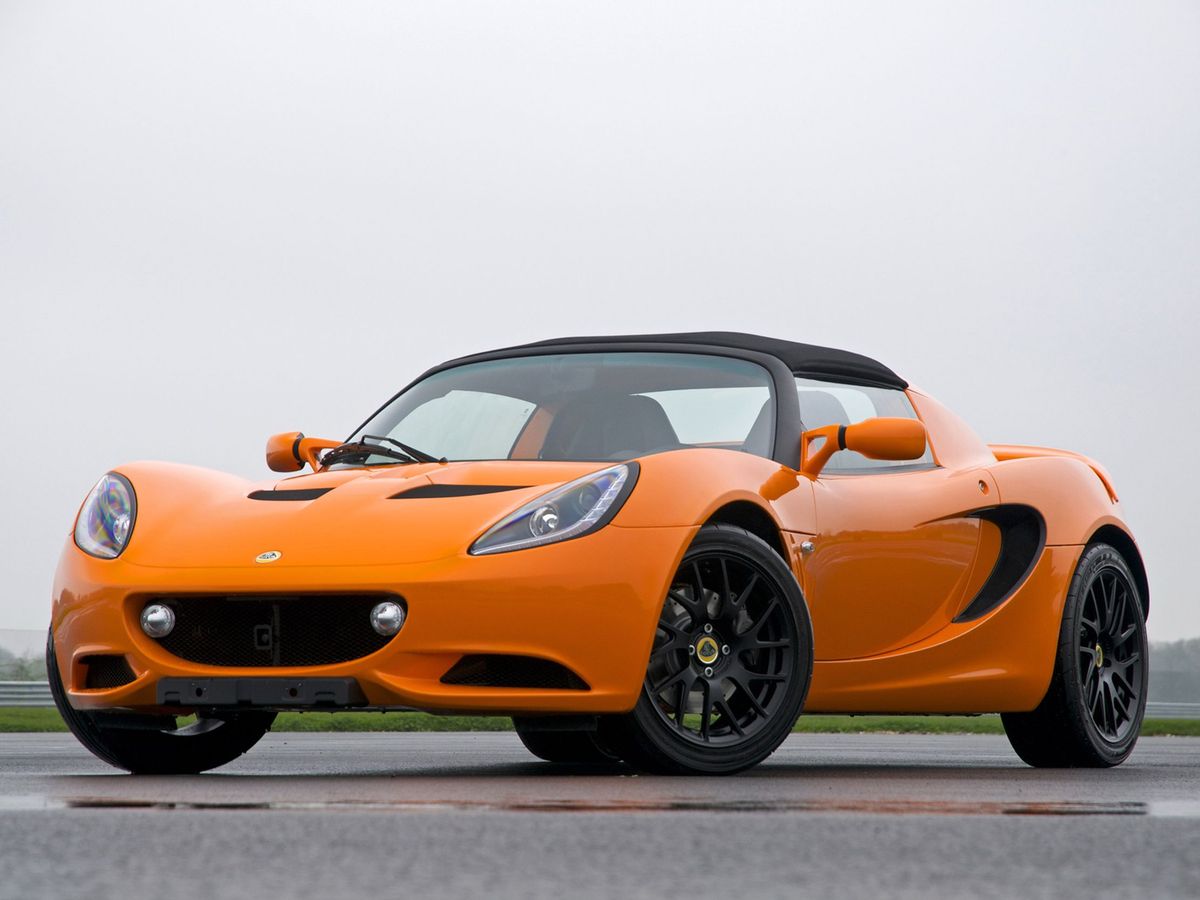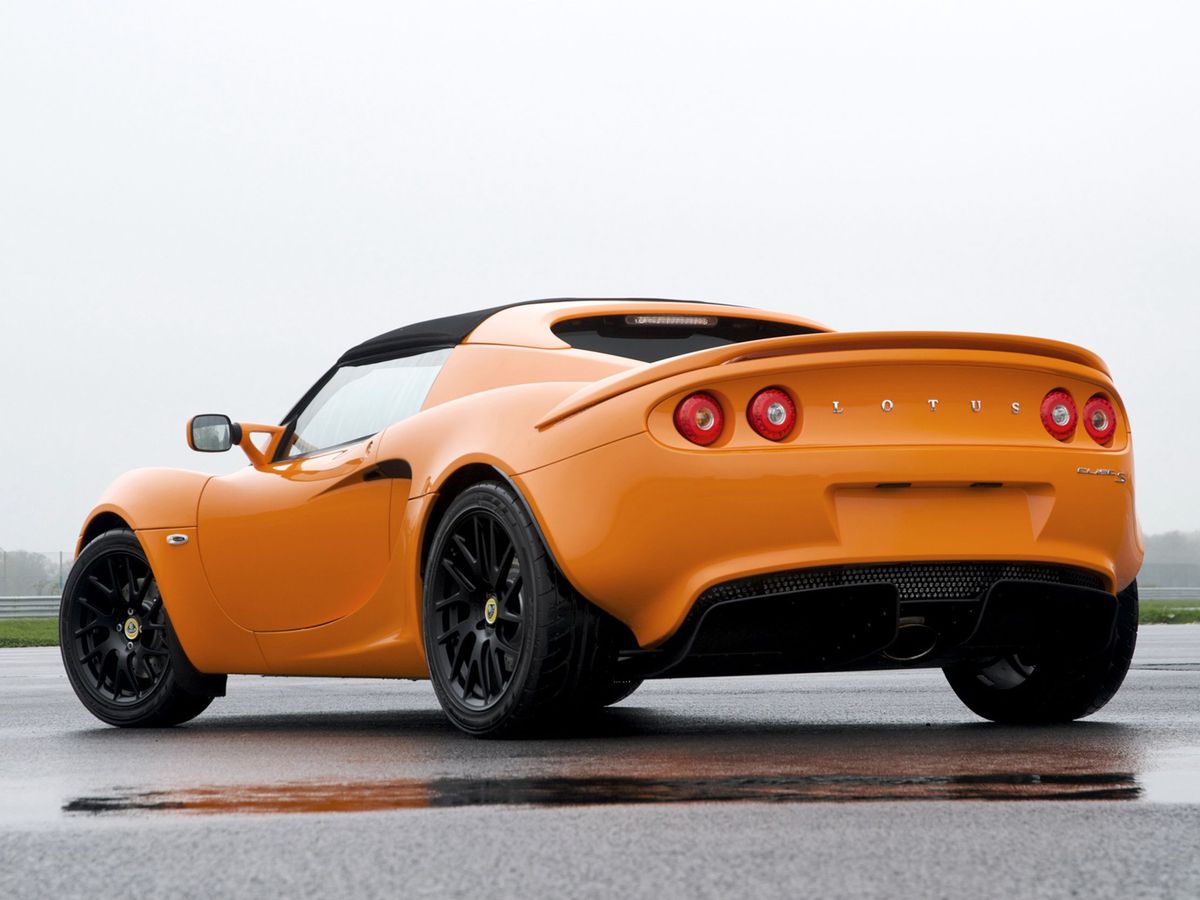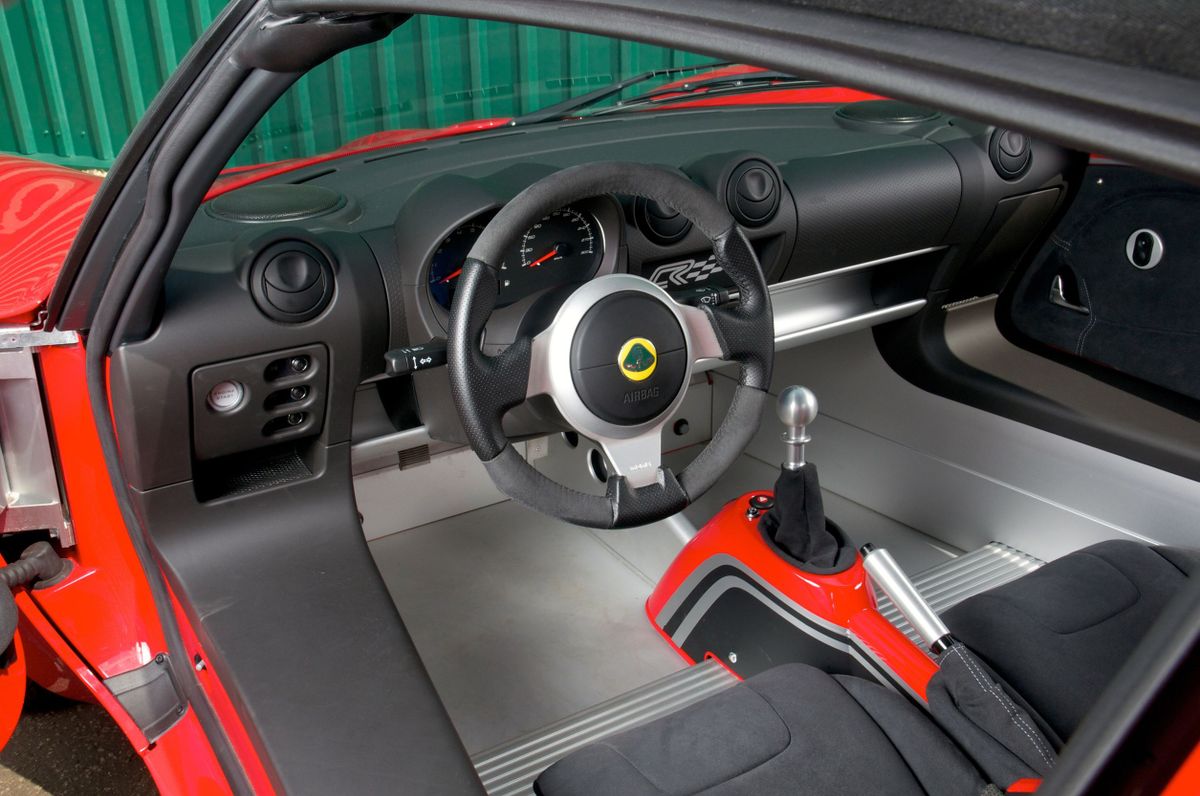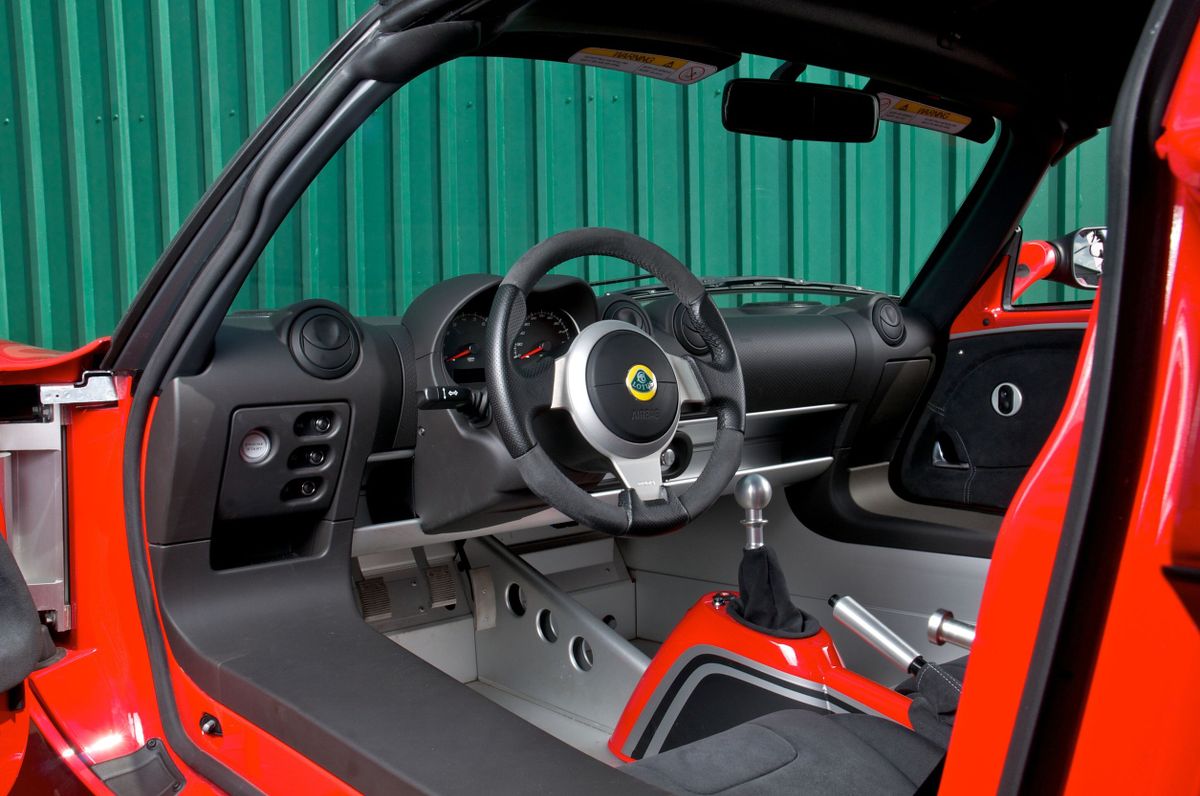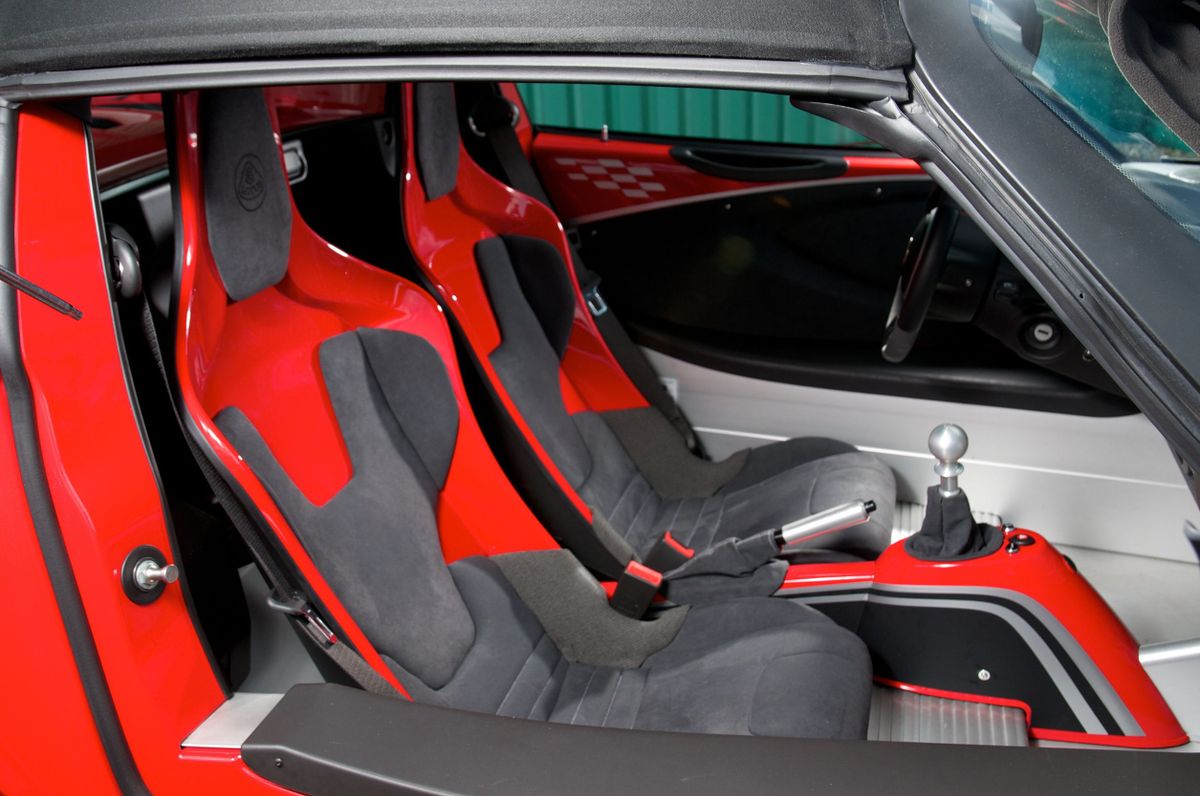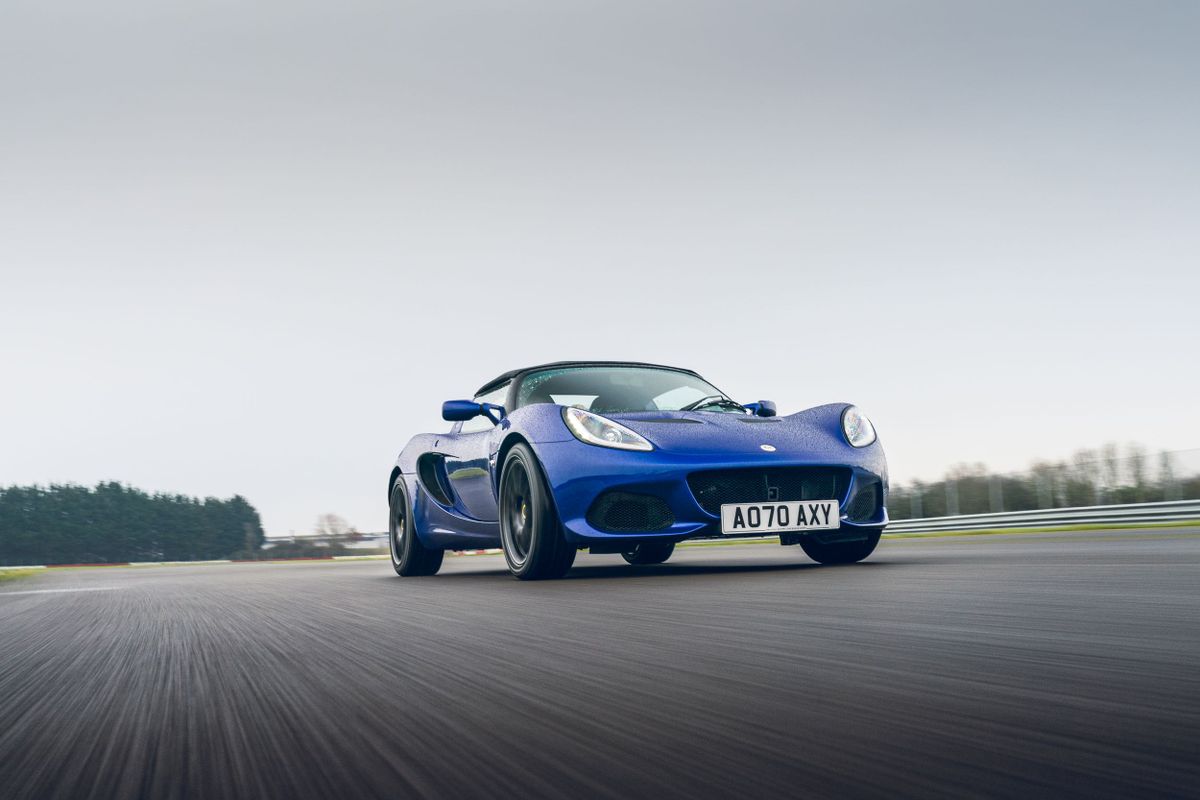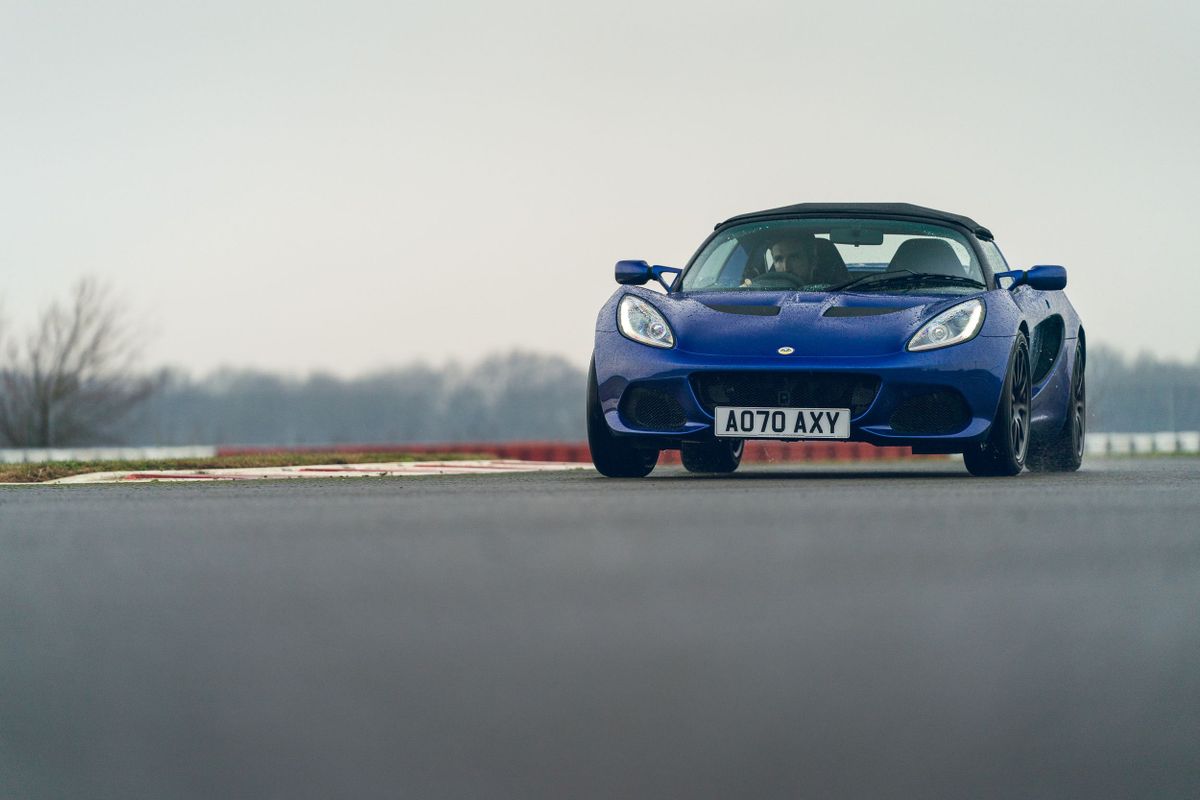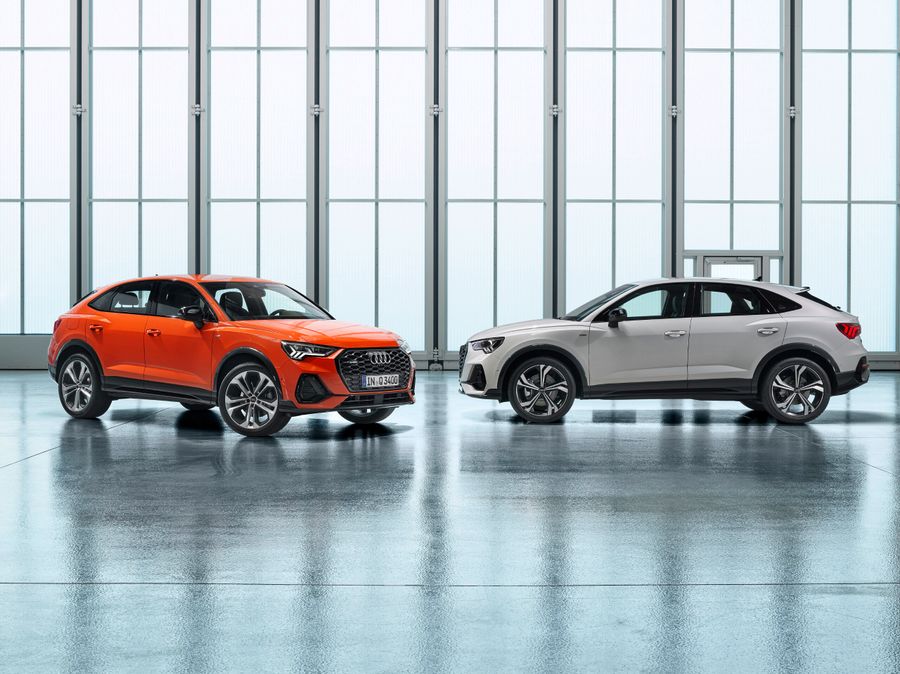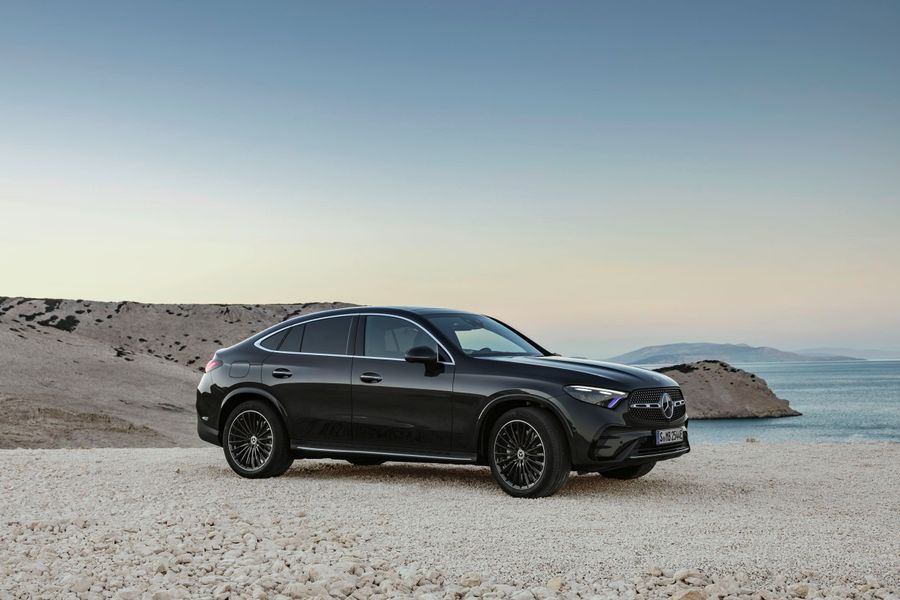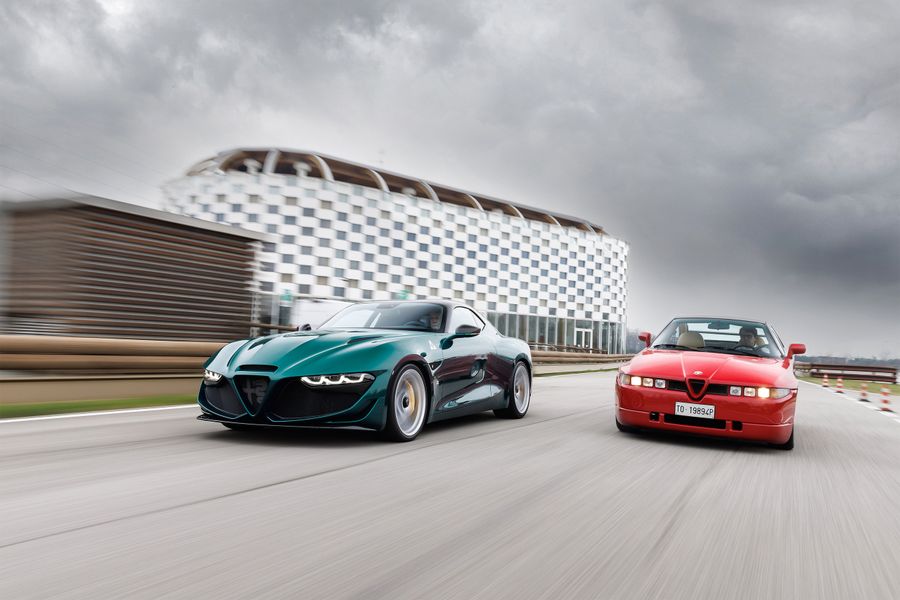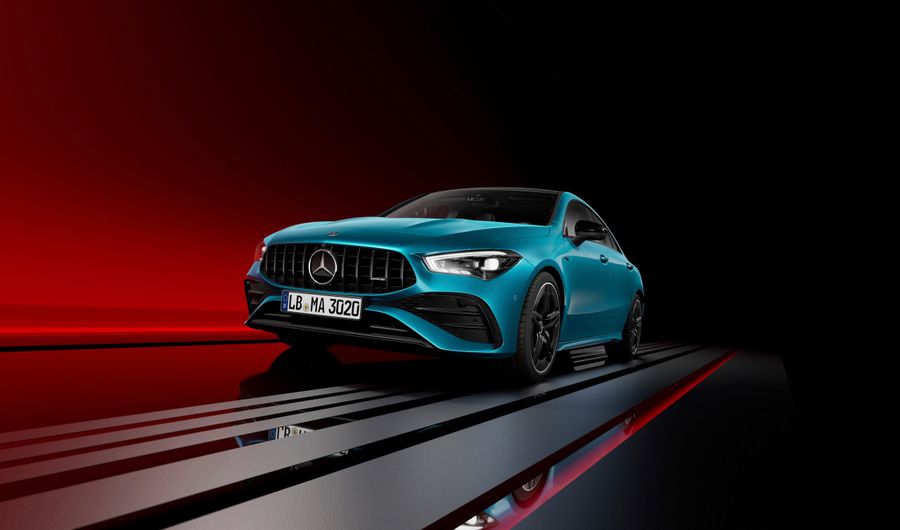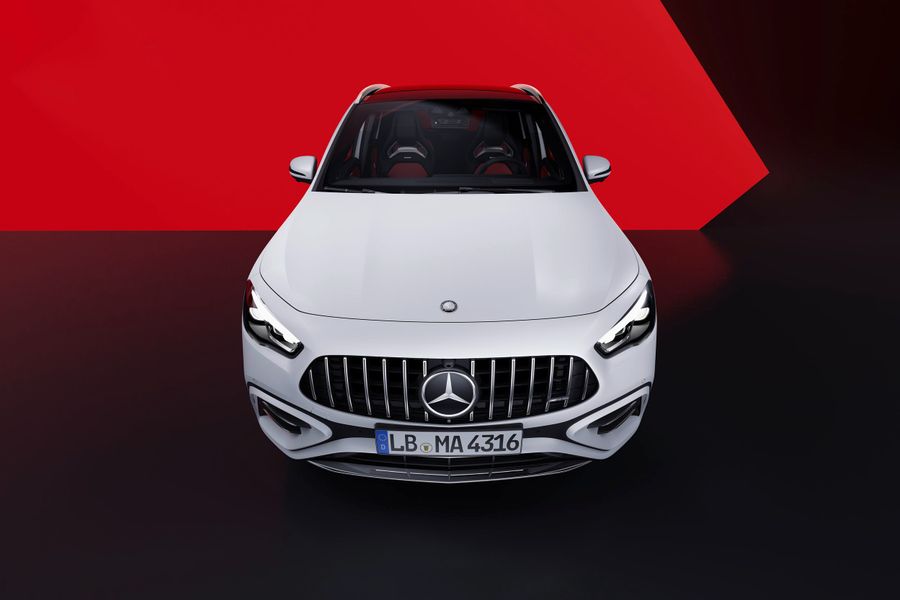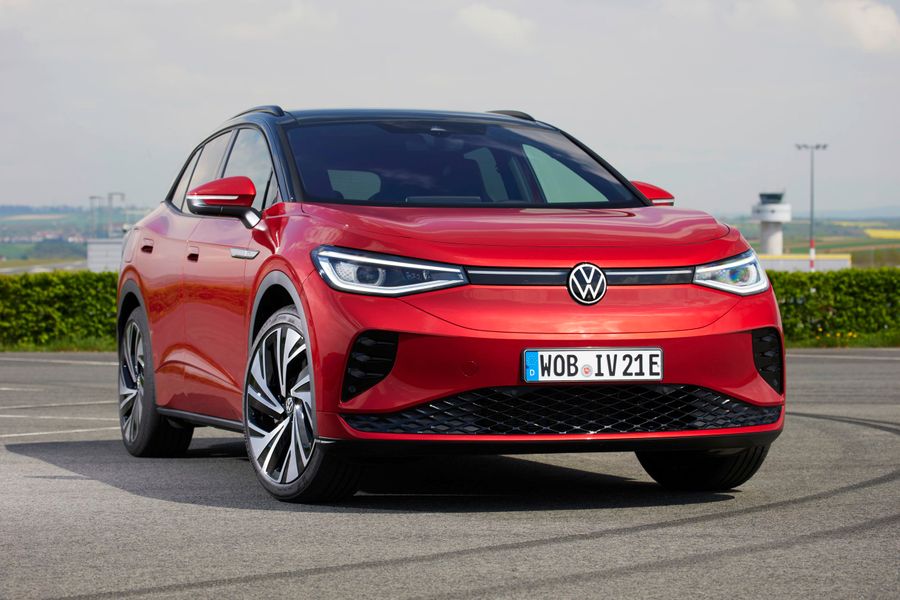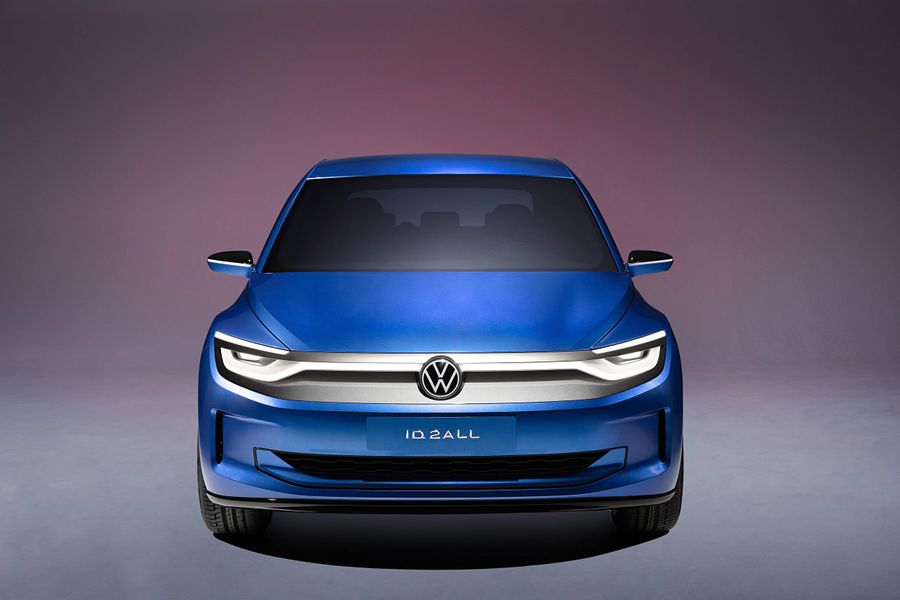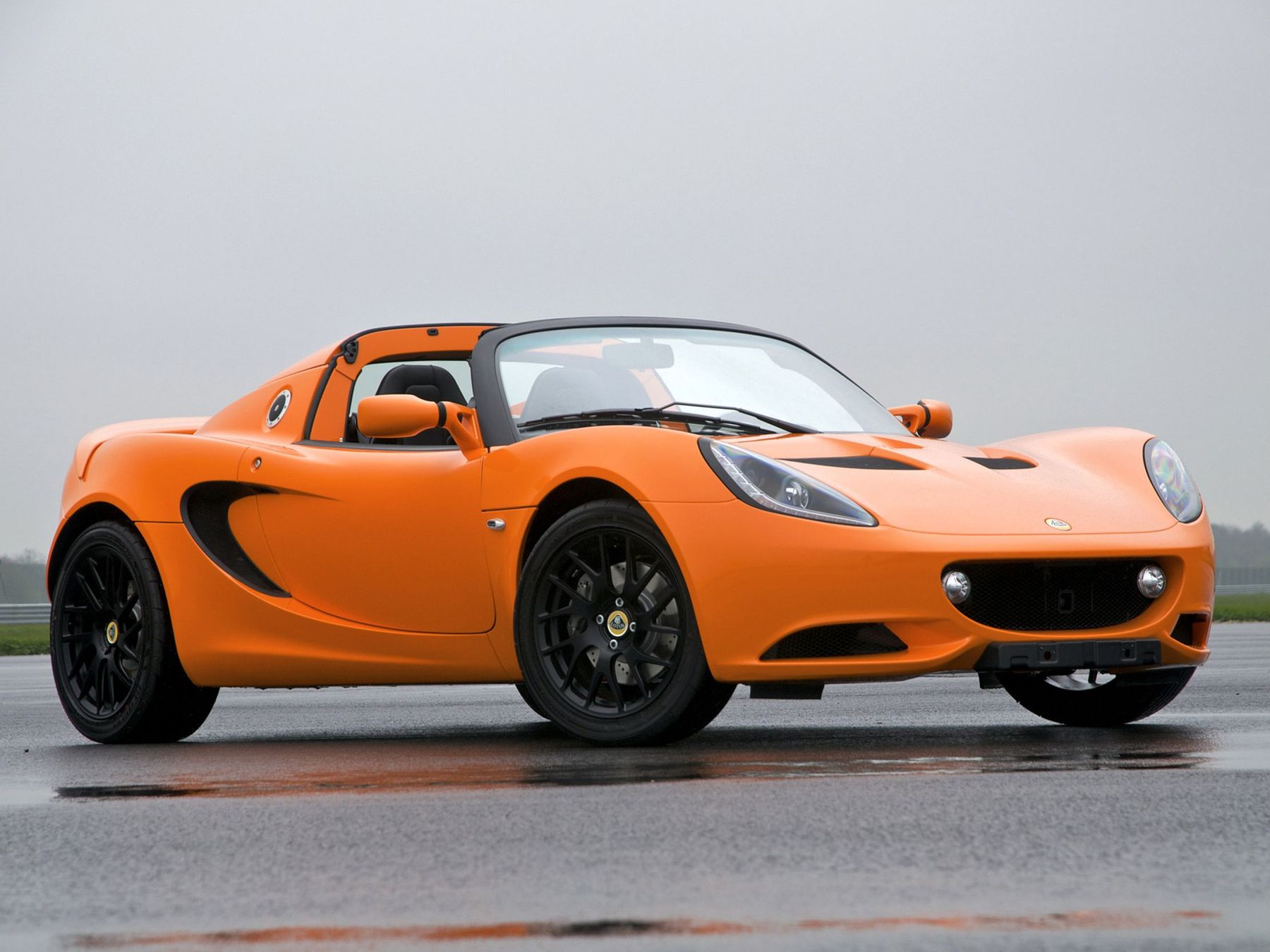
Lotus Elise Roadster. 2nd generation, 2010 restyling
The Lotus Elise is a compact rear-wheel drive mid-engine roadster manufactured by Lotus Cars (UK). It has been produced since 1996. Since 2002, the manufacturer started producing the second generation Elise, which underwent restyling in 2010.
Apart from its attractive design and excellent sports performance, the car catches attention with its relatively affordable price. At the beginning of 2021, the company had to limit the planned amount of final versions to two models. They are designed to properly end the existence of the legendary car, which will be discontinued this year (as of 2021).
Exterior
The small, only 3,785 mm long, sports car has a harmonious design. Its front face is decorated with cheerful ‘eyes’ of elongated headlights and a wide ‘smile’ of the cutout imitating the radiator grille (note that the engine is in the middle of the car) with parking lights. Elegant lines form the car’s image featuring numerous curves and convex shapes with the high sill flowing into the air intake in front of the rear wheel. The rear end of the car looks perky and very recognizable, being cheerfully raised and shining with double round taillights.
The car has borrowed its design from the aviation industry. Thus, it features a lightweight, 68 kg, monocoque frame made of extruded aluminum alloy elements, glued together with epoxy resin, which hardens firmly when heated. Such a chassis has a high torsional rigidity, which ensures excellent handling of the car. The chassis has a lightweight steel subframe attached to its rear part that is designed to support the engine and gearbox. Body panels are made of polypropylene-based composite materials. As a result, the car’s weight does not exceed 860 kg, which not only increases the output, but also improves fuel-efficiency. This is the concept of all the cars of the legendary brand with extensive experience in asphalt racing and rally. It was originally created by the founder of the brand, British engineer Colin Chapman.
The composite body of the sports car provides a sufficient level of passive safety and impact absorption efficiency in a collision. The new Lotus Elise is equipped with frontal airbags and such optional features as electronic stability control, traction control system, fog lights. After the restyling in 2010, the Elise has acquired new alloy wheels, new LED headlights and direction indicator sections.
Interior
The new Lotus Elise roadster is a two-seater with no rear seats (the engine is located there). The interior is very simple and contains nothing extra, not even a center console. The equipment, as a compromise, has started including air conditioning, power windows, radio, cruise control and ABS. Since the car is open, there is a double insulated soft top or a rigid removable roof option.
Those who see the car with their own eyes are surprised by the tightness of its small interior. Indeed, only flexible and rather slender people manage to squeeze in. However, the ergonomics are good, and once a comfortable position is taken, you can easily forget about this inconvenience. There are compartments for different things: one tiny compartment for a handbag at the front, and another rear compartment with a volume of 110 liters. These compartments are located under the hood and in the place where the trunk is usually located in the front-engine cars.
Engines and chassis
The 2010–2020 Lotus Elise has been produced to this day (as of 2021). It is powered by two engines by Toyota: a 1.6-liter 1ZR with 136 hp (6,800 rpm) and a torque of 160 Nm (4,400 rpm). The maximum speed is 204 km/h, and the acceleration to 100 km/h occurs in 6.5 seconds. The engine consumes 8.3 l/100 km within the city and 5.0 l/100 km outside the city.
A more powerful Elise comes with a 1.8-liter 2ZR-FE, producing 220 hp at 6,800 rpm. Turbocharging provides high efficiency over a wide rpm range, while the maximum torque of 250 Nm is achieved at 4,600 rpm, while the permissible maximum rpm is at around 7,000 rpm. The maximum speed is 234 km/h. Acceleration to 100 km/h occurs in 4.6 seconds. The engine consumes 10.3 l/100 km within the city and 5.9 l/100 km outside the city.
As for the basic gearbox, the manufacturer offers a 6-speed manual transmission. Lotus also offers to test the unique Elise SPS gearbox, which is optional. The SPS (Serial Precision Shift) semi-automatic transmission is a proprietary development of British engineers that supports several operating modes (manual and several automatic, including ‘Sport’), which are controlled by convenient paddle switches. Fast switching between gearbox operating modes will allow you to use the optimal parameters of the car’s movement depending on the surrounding environment, providing maximum acceleration dynamics when overtaking on the highway or a smooth acceleration when driving in the city.
The 2019/2020 Lotus Elise comes with a double wishbone fully independent suspension. With the Sport Pack option, the car is equipped with a clutch control system, Bilstein sport monotube gas shock absorbers, Eibach coaxial coil springs. Lotus DPM (Dynamic Performance Management) allows the driver to choose between three driving modes: Touring, Sport and DPM off and optimally tune the car to suit the driving style and road conditions.
Modifications
In recent years, the model range has consisted of four modifications, which could offer different equipment, weight and dynamics.
- Cup 250: 1.8-liter supercharged engine (250 hp/265 Nm); 6-speed manual transmission; weight - 860 kg; 0 to 100 km/h acceleration - 4.3 seconds. Interior trim - black Alcantara with contrasting red or yellow stitching, carbon fiber sports seats;
- Cup-260: 1.8-liter supercharged engine (250 hp/265 Nm); 6-speed manual transmission; weight - 862 kg; 0 to 100 km/h acceleration - 4.2 seconds. Interior trim - black Alcantara with contrasting red or yellow stitching, carbon fiber sports seats; interior elements painted red, yellow, silver, orange, black or white;
- Sprint 220: 1.6-liter supercharged engine (220 hp/250 Nm of torque); 6-speed manual transmission; weight - 845 kg; 0 to 100 km/h acceleration - 4.5 seconds; power-to-weight ratio - 257 hp per ton;
- Sport 220: 1.8-liter supercharged engine (250 hp/265 Nm); 6-speed manual transmission; weight - 845 kg; 0 to 100 km/h acceleration - 4.2 seconds; power-to-weight ratio - 257 hp per ton. The car features a dashboard with new graphics and a new infotainment system compatible with iPod and Bluetooth, power windows, front heater deflectors, combined black interior trim with silver stitching, silver interior elements.
All the modifications come standard with Lotus DPM system with Drive, Sport, Off modes; electronic differential lock; brakes with the AP Racing twin-piston front calipers and Brembo single-piston rear calipers; lightweight gearshift mechanism that provides more accurate and faster shifting, uncased; two front airbags and an engine start button. The list of options includes: ultra-light forged alloy wheels in silver (16-inch at the front and 17-inch at the rear), titanium exhaust system, 3 kg hard removable carbon fiber roof, leather interior, cruise control, air conditioning, Alcantara-lined steering wheel, ventilation grilles and sills.
2021 final models
The Final Edition versions are distinguished by an expanded list of options, redesigned interior trim, and the presence of virtual dashboards. The cars come with the plates indicating that they belong to the last release.
- The Elise Sport 240 Final Edition is equipped with an engine generating 243 hp and 244 Nm. It weighs 922 kg and accelerates to 60 mph (97 km/h) in 4.1 seconds. The car features forged wheel rims (16 inches on the front axle and 17 inches on the rear one). There are optional carbon fiber body parts, a lightweight lithium-ion battery and a polycarbonate rear window (-24 kg from weight).
- The Elise Cup 250 Final Edition comes with a reinforced suspension, aerodynamic body kit that creates 66 kg of downforce at a speed of 161 km/h or 155 kg at a maximum speed of 248 km/h. There are forged wheels and tires Yokohama A052 195/50 R16 at the front and 225/45 R17 at the rear. A lithium-ion battery and a polycarbonate rear glass are standard. There are optional carbon parts, with which the car will weigh 931 kg.


